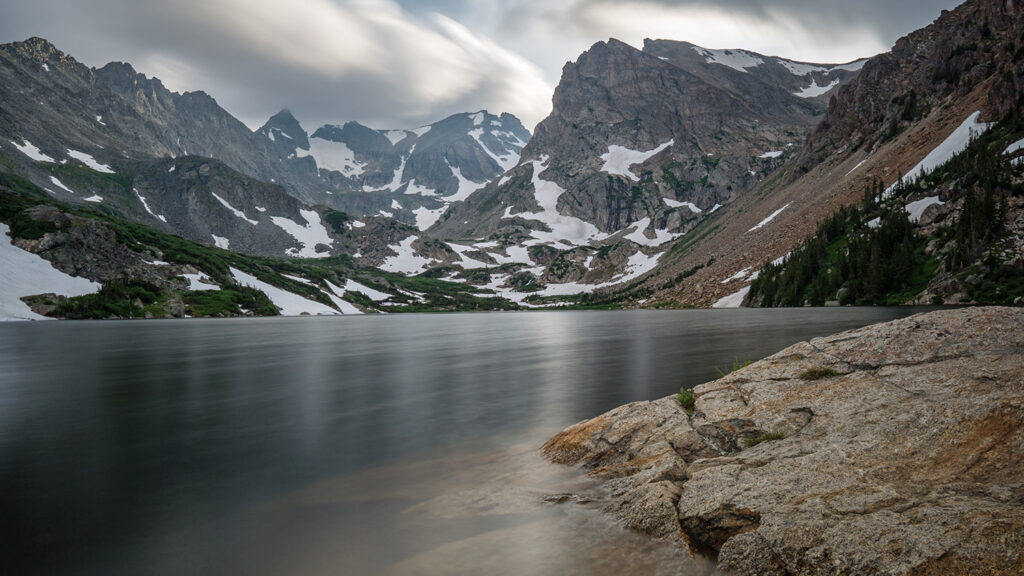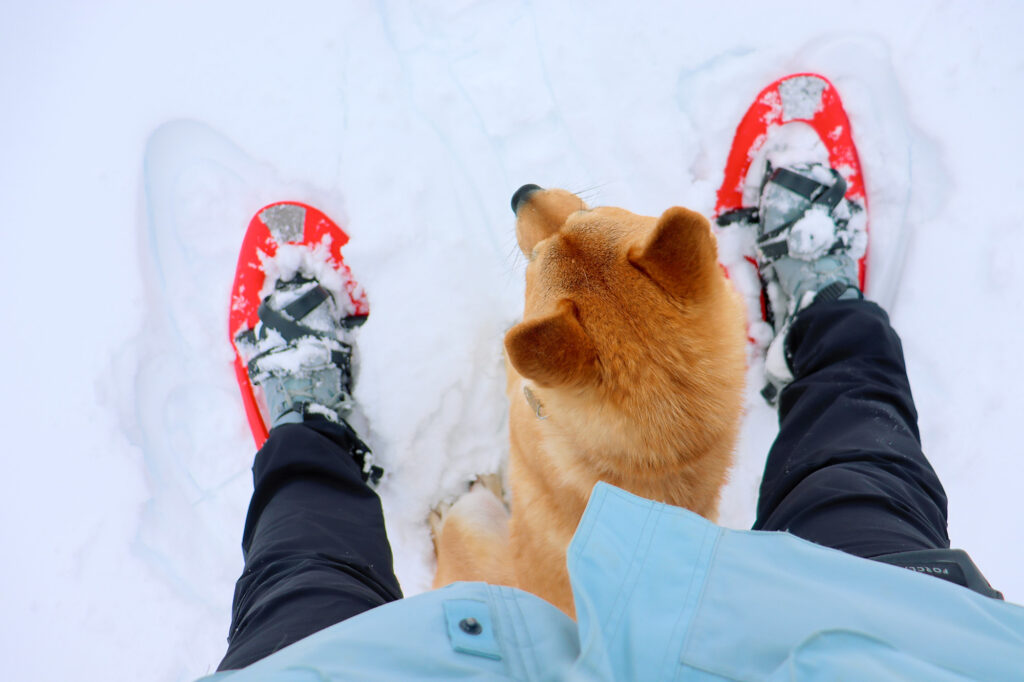Are you ready to make the most of the snowy season? Snowshoeing with your dog is an exhilarating adventure, but the deep powder, icy conditions, and cold temperatures demand specific safety protocols. Don’t wait until the gear is packed to start thinking about the risks! This comprehensive guide walks you through every step of getting your dog physically and behaviorally ready for the trail, covering essential gear, training commands, and critical safety tips. Let’s make sure your winter trek is defined by fun, not frustration.
Why is it Important to be Prepared Before Snowshoeing with a Dog?
Thinking your dog’s natural fur coat is enough to handle a winter trek can lead to an emergency. Preparedness isn’t just about packing the right gear; it’s about understanding the demands of the environment and your dog’s physical limitations.
Here are the key reasons why preparation is crucial:
- Preventing Hypothermia and Frostbite: Dogs are susceptible to cold-related injuries, especially on their paws, ears, and belly. Preparation ensures you have the right gear and knowledge to keep them warm and dry.
- Avoiding Trail Injuries: Deep snow can hide rocks, logs, and other hazards that can cause sprains or cuts. Proper training and knowing the terrain can prevent these unexpected injuries.
- Respecting Wildlife and Other Users: Trails are shared spaces. Being prepared means your dog is under control with reliable commands, preventing unwelcome interactions with wildlife or disrupting other hikers.
- Managing Fatigue and Dehydration: Snowshoeing is a strenuous activity. Preparation ensures you pack enough water and high-energy snacks to keep your dog fueled and hydrated, preventing exhaustion miles from the trailhead.
Is Your Dog Ready to Hit the Winter Trail? 5 Tips to Prepare
Before you strap on your snowshoes, you need to ensure your dog is physically and behaviorally ready for the demands of the winter trail.
1. Check Their Physical Condition and Age
Not all dogs are built for deep snow and long treks. Brachycephalic (flat-faced) breeds (like Pugs or Bulldogs) may struggle with the cold and heavy exercise. Young puppies and very senior dogs may not have the stamina or cold tolerance for a long trip. Consult your vet to ensure your dog is fit for the activity.
2. Toughen Up Those Paws (and Protect Them)
Snow, ice, and road salts can be brutal on paw pads. Start by trimming the hair between the pads to prevent snow and ice from balling up. While you’re prepping, you should also introduce your dog to wearing booties before you hit the trail. The soft, deep snow is often manageable, but icy sections are much safer with proper paw protection.
3. Build Endurance Gradually
Your first snowshoe trip should not be a five-mile epic. Start with short, familiar hikes in the snow and gradually increase the distance and difficulty. This helps condition their muscles for the unique, higher-stepping movement required in deep powder.
4. Practice Essential Off-Leash Skills
While your dog may need to be on a leash, practicing reliable off-leash commands in a safe area is excellent preparation. The snowy environment introduces new distractions and a colder trail, making solid recall even more critical.
5. Hydration and Nutrition Plan
Snowshoeing is intense, and dogs can become easily dehydrated, even in the cold. Bring water and a dedicated collapsible bowl. Plan for high-energy, easily digestible treats to replenish calories during breaks. Don’t rely on your dog eating snow it can actually lower their core temperature.
Tips for Humans on Their First Snowshoe Adventure
When it comes to snowshoeing with a dog, don’t forget about yourself! Your comfort and safety directly impact your dog’s experience.
- Layer Up, but Don’t Overdress: Snowshoeing is an intense aerobic workout. Wear moisture-wicking layers that you can easily take off and put on to regulate your temperature.
- Wear Waterproof Boots: Wet feet are cold feet. Invest in quality waterproof, insulated hiking boots.
- Check the Avalanche Forecast: In mountainous regions, many popular snowshoe trails can intersect with or be exposed to avalanche terrain. Always check the local avalanche forecast before heading out.
- Pack a Repair Kit: It’s smart to bring a small repair kit with duct tape and zip ties. Your snowshoes or dog gear (harness, leash) can break unexpectedly in the cold.
- Use Poles: Snowshoe poles help with balance, which is essential when a dog is pulling on a lead or breaking trail through deep snow.
Staying Safe Snowshoeing with Your Dog
The core of a successful winter trek is vigilance and safety awareness. Here are some safety tips for when it comes to snowshoeing with a dog:
Winter Safety Tips for Dogs
- Carry a First Aid Kit: Your kit should include items like vet wrap, antiseptic wipes, allergy medication (as directed by your vet), and paw ointment for potential cuts or pad irritation.
- Know When Your Dog Needs a Jacket: The need for a jacket depends heavily on your dog’s natural coat.
- Short-Coated Breeds like Vizslas, Greyhounds, and Pit Bulls often require a jacket, especially in temperatures below 20 degrees or during rest breaks.
- Thick/Double-Coated Breeds like Huskies, Malamutes, and German Shepherds typically don’t need a coat while actively exercising, as they are prone to overheating when their blood is pumping.
- Jacket Material Matters: For cold but dry weather, a soft fleece or sweater is often sufficient. If it is actively snowing or wet, a waterproof jacket may be necessary, depending on the dog’s natural coat.
- A Note on Double Coats: Double-coated dogs (e.g., German Shepherds, Golden Retrievers, Great Pyrenees) have a naturally waterproof topcoat. It is imperative that you never shave a double-coated dog, as this removes the protective topcoat and makes them much more prone to both heat stroke and hypothermia.
- Watch for Signs of Cold Stress: Monitor your dog for indicators of hypothermia such as shivering, slow movement, whining, repeatedly lifting their paws, laying down in a tight ball, or tucking their tail tightly against the body. These are clear signs they need to warm up, put on a coat, or head back to the car.[JA1]
- Check Pads and Fur Often: During breaks, inspect your dog’s paws for packed snow, ice balls, or cuts. Clear out any compacted snow from their coat to prevent the coat from matting and freezing.
- Know When to Turn Around: Deep snow takes a toll on dogs. If your dog is struggling to keep up, breaking through a deep crust, or showing clear signs of fatigue, don’t push it. The trail will be there another day.
Essential Commands for Snowshoeing with Your Dog
Solid commands make the experience safer and more enjoyable for everyone on the trail. The reliability you build here is the foundation for almost any winter dog sport. If you’re interested in taking on a more advanced challenge, these skills prepare your dog for skijoring, too! You can learn more about making that jump in our guide on How to Ski with Your Dog.
| Command | Why It’s Essential on the Trail |
|---|---|
| “Heel” or “Side” | Keeps your dog directly beside you when passing other users, preventing tangles with snowshoes or their poles. |
| “Hike” or “Forward” | Encourages them to break trail or keep a steady pace, which is helpful if they are pulling you on a harness. |
| “Wait” or “Stay” | Critical for stopping your dog before they rush onto a frozen pond or stream, or while you navigate a tricky downhill section. |
| “Leave It” | Crucial for ignoring wildlife (like elk or rabbits), discarded food, or other distractions on the trail. |
| “Come” (Recall) | The most important command. Must be reliable, even when they’re running through powder and full of excitement. |
Our Favorite Winter Colorado Dog-Friendly Snowshoeing Trails
Colorado offers some of the best winter trails in the country. Always verify current conditions and leash rules before you go!

Brainard Lake Recreation Area (Nederland/Ward)
A stunning, high-altitude area where the main road closes for the winter, leaving a gentle, packed snowshoe track that is great for beginners. Dogs must be on a leash.

Echo Lake Park (Idaho Springs)
Located right off of I-70 near Mount Blue Sky (formerly Evans), this is an easily accessible option with relatively flat, beautiful paths around the lake that are perfect for a shorter, introductory trip.

Staunton State Park (Pine)
Offers varied terrain and great views with many dog-friendly trails. Snow conditions vary, but it’s a wonderful place to escape the Front Range urban environment without driving deep into the mountains.
Get Trail-Ready: How BlackPaw Dog Training Can Prepare You and Your Dog
A memorable, fun snowshoe trip relies on reliable training. If your dog’s recall is inconsistent, or if they lack the focus to stay with you when they see a squirrel or another hiker, the experience can become stressful or even dangerous.
At BlackPaw Dog Training, we specialize in building confidence and reliability in high-distraction, real-world environments. Our programs focus on:
- Rock-Solid Recall: Ensuring your dog comes back immediately, every time, no matter how exciting the deep snow is.
- Leash Manners: Teaching your dog to walk politely beside you or pull effectively on a snowshoe harness without constantly weaving or tripping you.
- Environmental Socialization: Preparing your dog to calmly handle encounters with cross-country skiers, sledders, and wildlife. This is about building confidence, not just exposure. For a deep dive into teaching your dog to be calm in new situations, read our guide on How to Socialize Your Dog the Right Way.
Happy Trails! Next Steps for Your First Snowshoe with Dog Adventure
Snowshoeing with a dog is a beautiful way to beat the winter blues and strengthen your bond. Start small, be prepared, and enjoy the pristine landscape together.
If you’re ready to ensure your dog is perfectly behaved and trained for the demands of the trail, reach out to us. Contact BlackPaw Dog Training today to schedule a consultation and take the first step toward your best winter yet!

